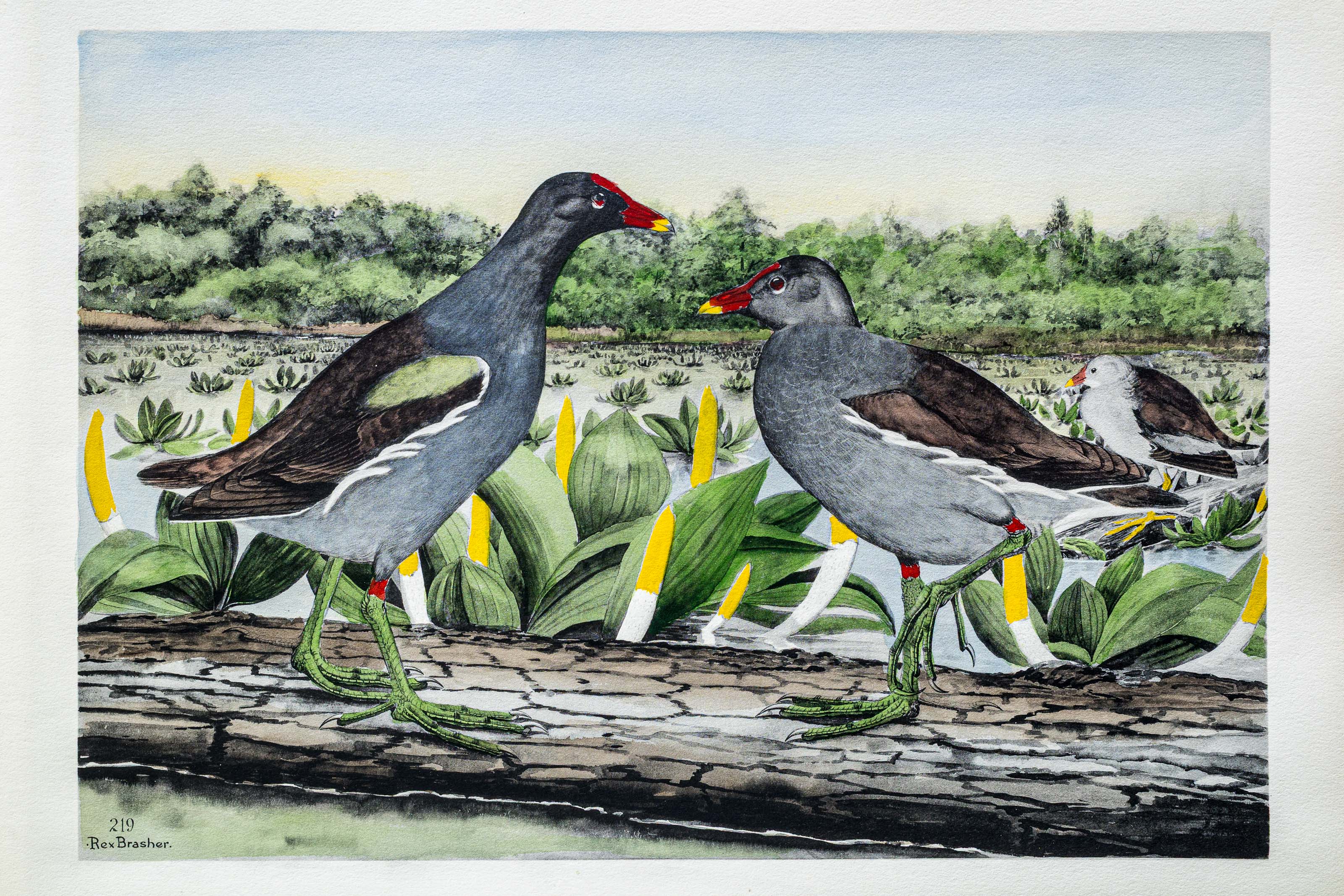
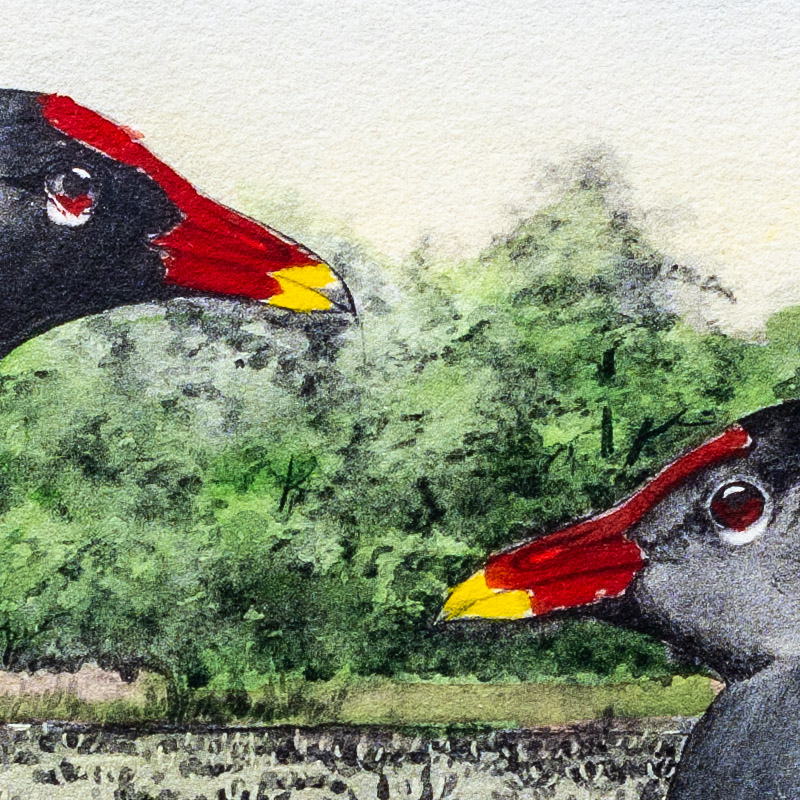
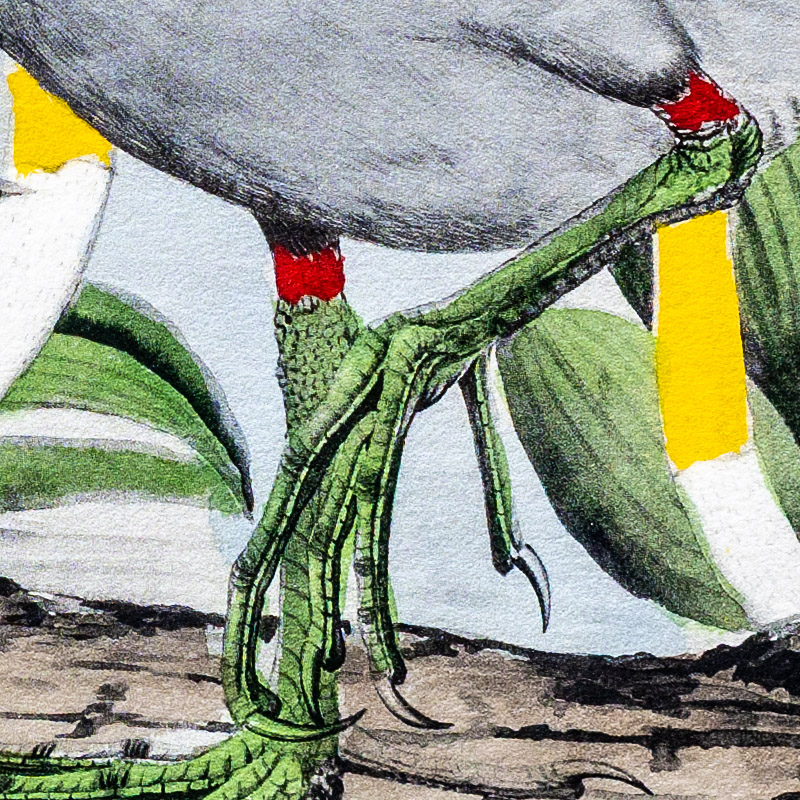
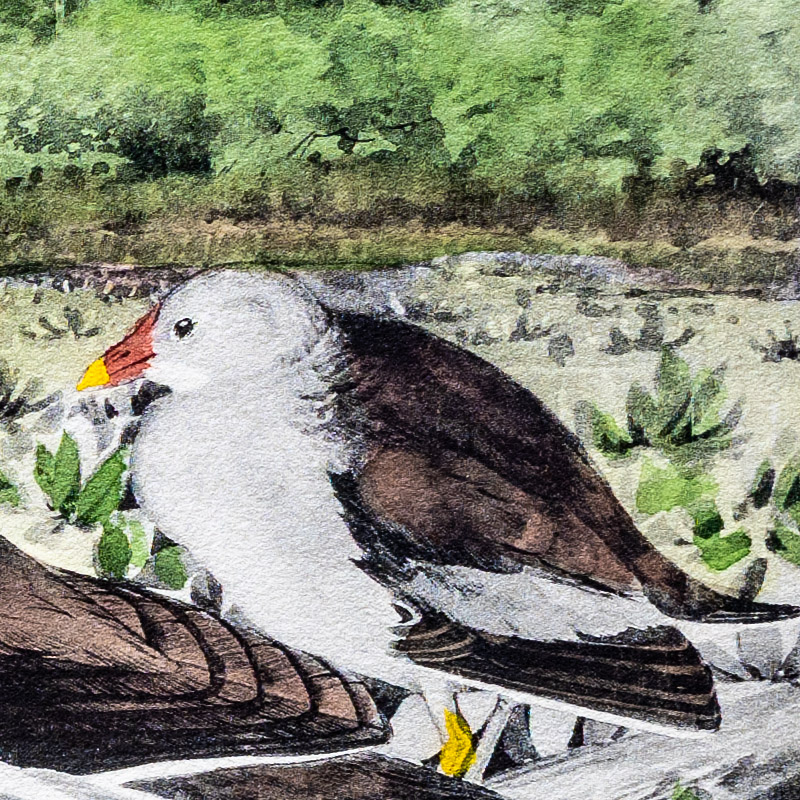
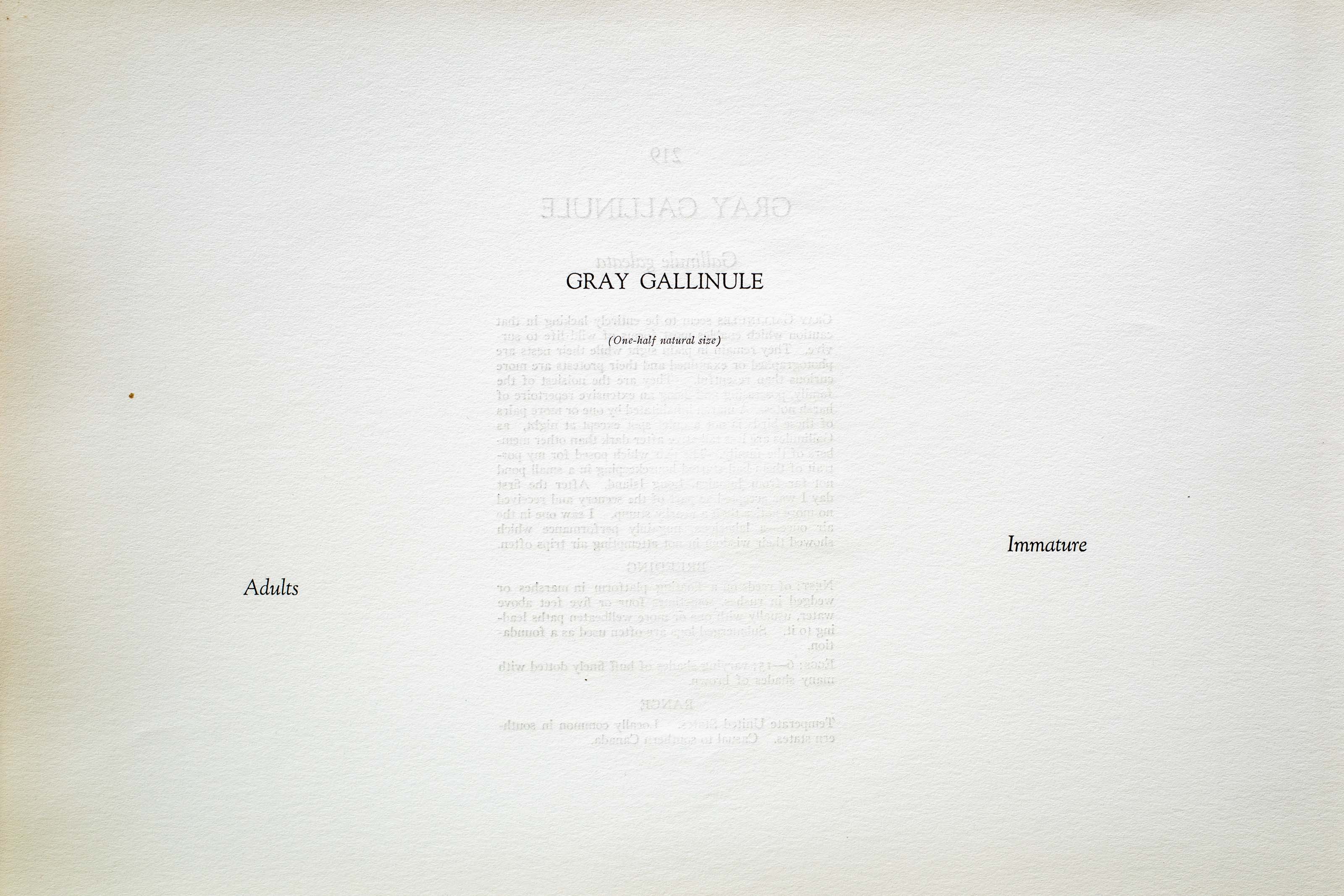
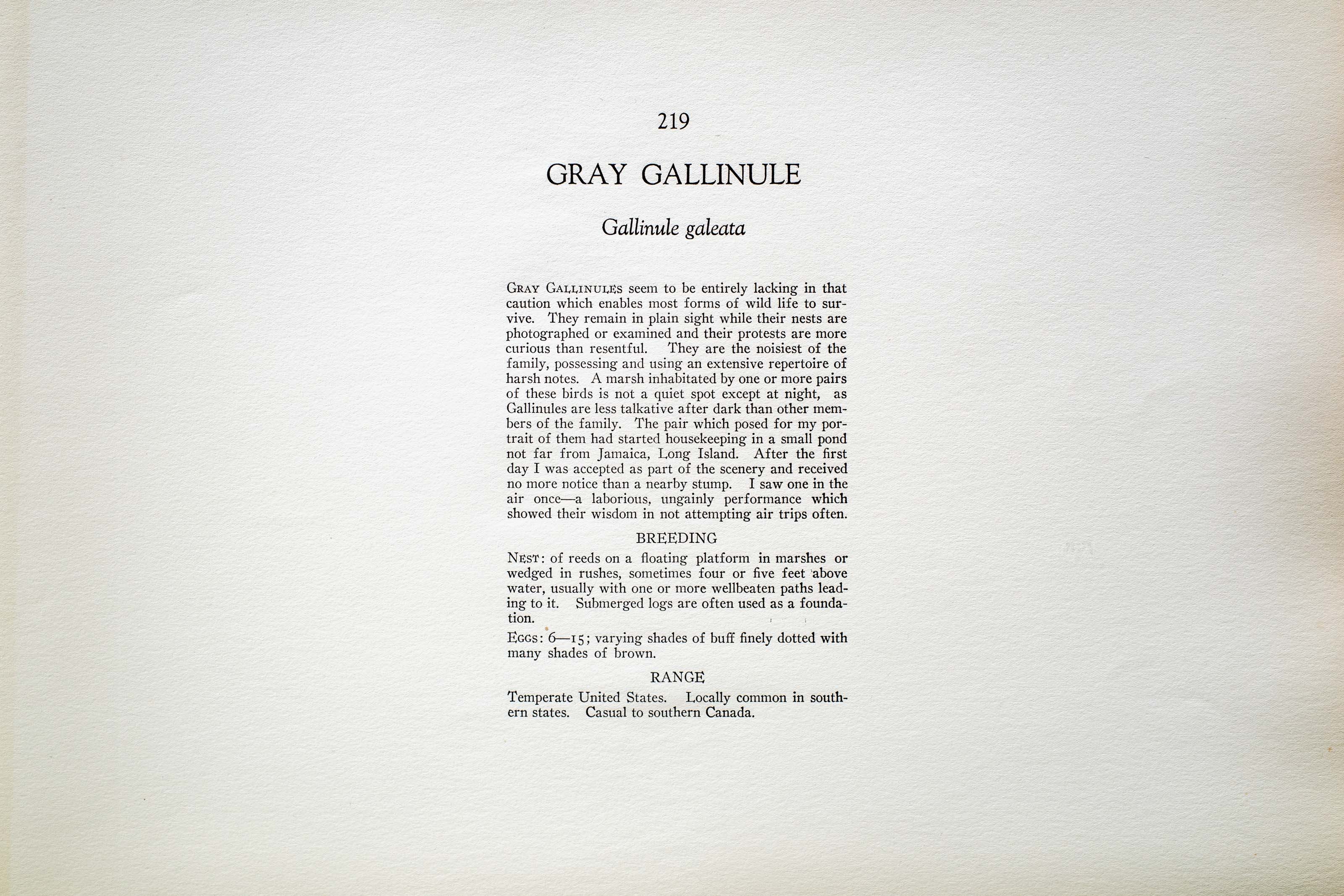

Unknown
1930
4
219
A team of dedicated board members, volunteers, and student interns has published every page in Volume 9. This volume includes 360 images of paintings and lyrical descriptions of birds, now available online for everyone to enjoy anywhere in the world. This is a monumental task. Each volume requires approximately 400 hours to photograph, edit, transcribe, catalog, and publish online. We need your support to complete this work.
If you're tech-savvy, have a good eye, are meticulous with details, and love structured data, please consider volunteering by emailing us at hello@rexbrasher.org.
We encourage all bird lovers and supporters to consider a monetary donation to support our mission to make Rex's work available for everyone. You can provide a one-time or recurring donation online.
GRAY GALLINULES seem to be entirely lacking in that caution which enables most forms of wild life to survive. They remain in plain sight while their nests are photographed or examined and their protests are more curious than resentful. They are the noisiest of the family, possessing and using an extensive repertoire of harsh notes. A marsh inhabitated by one or more pairs of these birds is not a quiet spot except at night, as Gallinules are less talkative after dark than other members of the family. The pair which posed for my portrait of them had started housekeeping in a small pond not far from Jamaica, Long Island. After the first day I was accepted as part of the scenery and received no more notice than a nearby stump. I saw one in the air once — a laborious, ungainly performance which showed their wisdom in not attempting air trips often.
NEST: of reeds on a floating platform in marshes or wedged in rushes, sometimes four or five feet above water, usually with one or more wellbeaten paths leading to it. Submerged logs are often used as a foundation.
EGGS: 6–15; varying shades of buff finely dotted with many shades of brown.
Temperate United States. Locally common in southern states. Casual to southern Canada.